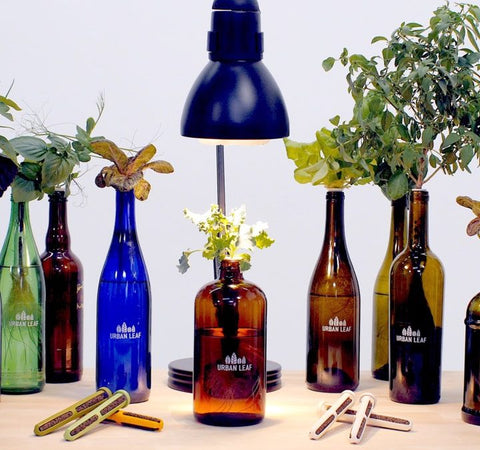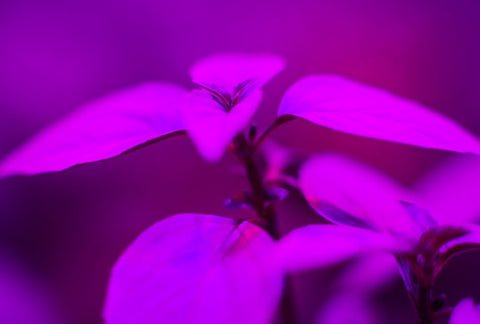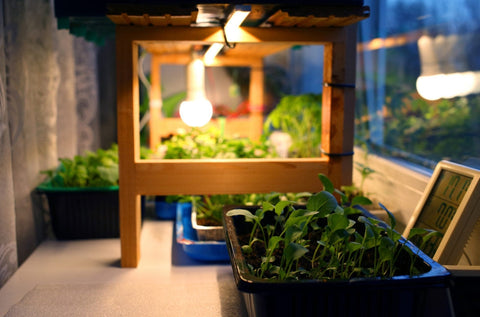A good fix for your plant that is not getting enough light is natural light!
Herbs such as basil, cilantro, dill, and parsley all have slightly different light preferences, but as a general rule of thumb, your home garden needs at least 6 hours of direct sunlight a day. If you have an unobstructed South-facing window (or North-facing if you’re below the equator) then lucky you! You should be fine. Next, best is East or West facing.

Signs a Plant is Not Getting Enough Light
One sign that your plant is not getting enough light is if it is tall, stringy, leggy, and not very good for eating. This happens because it puts most of their energy into growing vertically, in search of more light. Plants that have ample light will put more energy into producing bushy foliage in order to absorb all that light. Making them much better for eating!
Another sign that your plant is not getting enough light is the yellowing and dropping of its leaves. It will also show signs of stunted leaf growth and an overall dull green color.
How to Fix your Plant that is Not Getting Enough Light
Many of us simply don’t have enough natural light to keep plants happy, and some form of the light supplement will be necessary. We recommend the following:
- An energy-efficient LED grow light, such as this one
- A simple lamp to hold it in place. Something like the below is nice because you can easily adjust the height as your plant grows. This should not cost you more than $15-20.
- A timer could be a good idea as well, in order to turn the lamp on/off each day. We recommend 12-14 hours per day.

-
For around $40 you can get an LED bulb, a lamp to hold it, and a timer to turn it on and off each day. Be careful that the light is always at least a few inches away from the foliage of your plant. LED lights are ‘energy efficient’ because unlike incandescent globes they don’t waste much energy as heat, but they will still produce some. Having the light too close to your plant will cause the leaves to burn, and for very young plants the excess heat may even be fatal!
Want To Know More?
We’re happy to help! Answers to some common questions are below, but if there’s something else on your mind please get in touch via the ‘Contact Us’ page.
The operating costs of LED globes are very low. In February 2017 the average electricity price in the US was 13.5 cents per kWh. Assuming we run our lamp for 12 hours per day, then the annual cost of an 8W globe such as the one we recommend is $4.73 per year. Use this calculator if you’d like to plug in different assumptions.
We like LED lights because they provide good quality and quantity of light at an affordable price, but other options do exist. Another popular option for the hobbyist is CFL or compact fluorescent. These will also screw into lamps like the one above. For larger-scale growers, 2-4 foot fluorescent tubes are also an option – as are the growing number of strip-LEDs on the market.
When it comes to light don’t be fooled by the way it ‘looks’ to your eye. The ‘white’ or ‘daylight’ that our eyes see is the average of a complete light spectrum, plus our eyes are most sensitive to yellow light. We cannot see ‘ultraviolet’ or ‘infrared’ at all. It is mainly the red and blue spectrums that plants need for photosynthesis, which is why many commercial grow lights look purple – they’ve simply omitted the rest of the light frequencies for the sake of energy efficiency. However, and this is where things can get complicated, just because an artificial light ‘looks’ (to your eye) similar to daylight does not mean it is providing the essential red and blue frequencies that plants need.
Think of it like this: we could put 4 balls labeled 1, 2, 8, and 9 into a bag and label that bag ‘5’ – which is the average of the balls’ values. Another bag might also be labeled 5, but it could contain 3, 4, 6, and 7. The human eye would see both bags as being identical, but the contents could be very different. The same applies to light.












There are no comments for this article. Be the first one to leave a message!